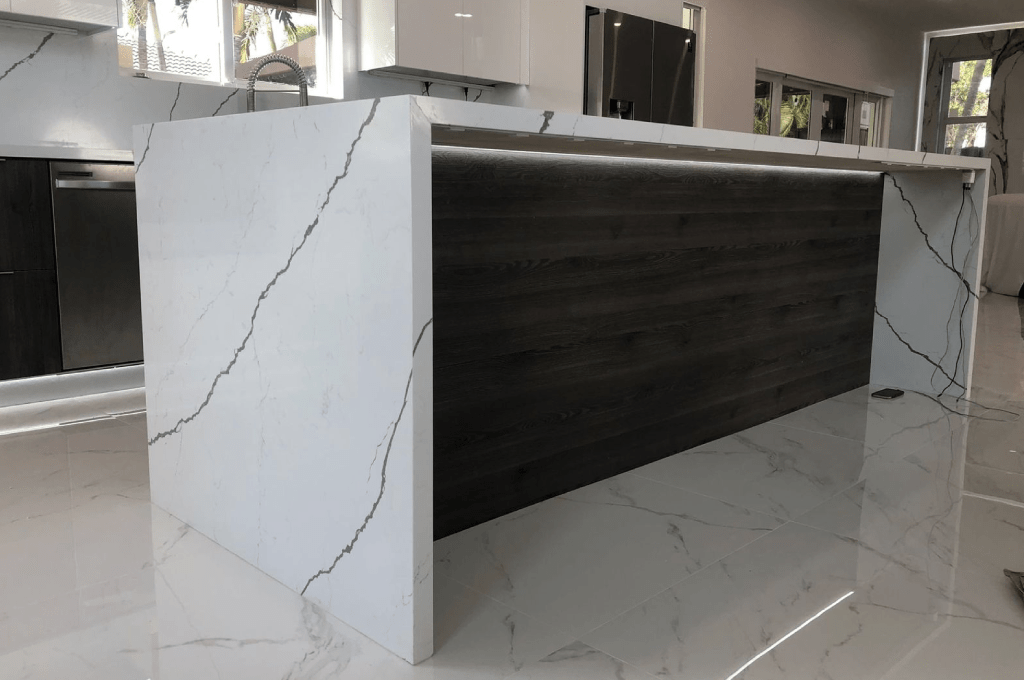When we talk about a Kitchen Remodeling there are one trend that’s becoming increasingly popular: the waterfall countertop: a design element that’s decidedly chic and luxurious.
Having a Kitchen Island has a lot of advantages like expanded storage, additional seating, a place to house an extra appliance, and even the opportunity for a second sink. Kitchen islands can also add a design element to your kitchen.
When selecting your countertop for your kitchen island, you can choose the standard design or a waterfall design. The standard design is a single horizontal surface that ends at the edge of the island whereas a waterfall design drops vertically down the sides which creates a continuous flow to the floor. Learn more about both designs to help you choose which one is best for you.
Standard Island Countertop
The common kitchen island features the standard design: A rectangular countertop slab that rests on cabinets and stops at the edge. The edging can be any design, from flat-edge to beveled to cove-ogee. The sides of the lower cabinets are typically painted to either seamlessly match or contrast with the perimeter cabinets. For the standard island, you can choose any material for the countertops, including butcher block, granite, engineered quartz and solid surfaces. Since countertops typically cost more than the wooden side of a cabinet, this option is far less expensive than the waterfall design. It is also less costly since it is easier to install. Since you can choose any material, style and color, the standard island countertop is the most common design for today’s kitchen.
Waterfall Island Countertop
Waterfall countertops are no doubt a show-stopper. These islands provide a seamless, custom look with the countertops flowing over the edge just like a waterfall. The edging is typically a flat-edge design to showcase the contemporary look. It is important to note that most waterfall designs are stone, including marble, granite, and quartz – not wood or laminate. The waterfall countertop is more expensive than the standard design not only because it requires more material but requires a certain amount of precision to seamlessly match veining and blend the edges where two slabs meet. The waterfall look doesn’t pair perfectly with every kitchen design and is best suited for contemporary and modern kitchens.
Which design is your favorite? Click here and schedule an appointment today to meet with our kitchen design specialist!

